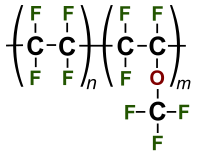
Photo from wikipedia
Abstract Understanding and quantitatively characterizing the hidden distribution and evolution of the whole-field stress in fractured coal is crucial for accurately predicting crack propagation and connection that affect the transport… Click to show full abstract
Abstract Understanding and quantitatively characterizing the hidden distribution and evolution of the whole-field stress in fractured coal is crucial for accurately predicting crack propagation and connection that affect the transport capability of coalbed methane in reservoirs during fracture stimulation. However, it is challenging to directly reveal and quantify the hidden stress field using traditional methods because of the difficulties associated with extracting and identifying the stress distribution around randomly distributed, discontinuous, irregular-geometry cracks as well as with fabricating a model with embedded cracks. This study presents an optical method to reveal and quantify the continuous evolutions of the whole-field principal stress difference and shear stress in fractured coal by combining three-dimensional (3D) printing technology and digital photoelasticity. 3D printing technology is used to replicate the transparent model of fractured coal. The ten-step phase-shifting method and quality-guided phase unwrapping algorithm in photoelasticity are used to estimate the whole field photoelastic parameters (isoclinic and isochromatic) in the fractured coal model. The comparison between experimental and numerical results is provided to further prove the efficacy of this method in handling the natural fractured coal structure. The effects of crack irregularity and discontinuity on the stress evolution in fractured coal are evaluated as well.
Journal Title: Optics and Lasers in Engineering
Year Published: 2020
Link to full text (if available)
Share on Social Media: Sign Up to like & get
recommendations!